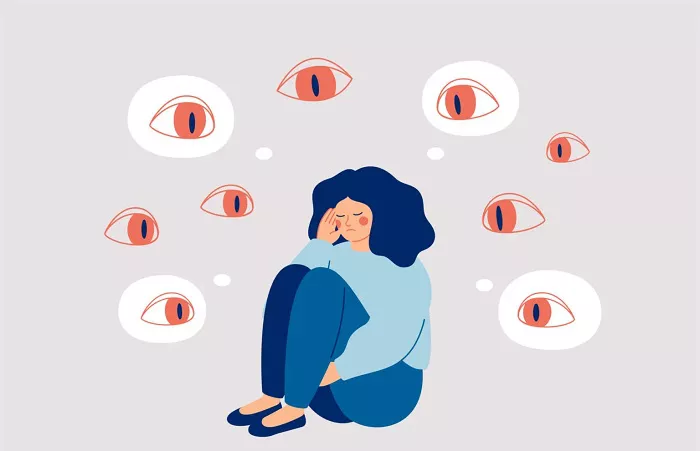Social anxiety is more than just shyness. For many people, it can be a serious mental health issue that affects daily life. But is it considered a disorder? The answer is yes. When social anxiety becomes extreme and interferes with a person’s ability to function, it is classified as a mental health disorder.
In this article, we will explore social anxiety disorder (SAD), its symptoms, causes, and treatments. We will also discuss how it differs from normal nervousness in social situations.
What Is Social Anxiety Disorder
Social anxiety disorder (SAD), also called social phobia, is a mental health condition where a person feels intense fear in social situations. This fear goes beyond normal shyness. People with SAD worry excessively about being judged, embarrassed, or humiliated.
Key Features of Social Anxiety Disorder
People with social anxiety disorder often experience:
- Extreme fear of social interactions
- Avoidance of social situations
- Physical symptoms like sweating, shaking, or nausea
- Fear that lasts for months or years
- Disruption in work, school, or relationships
If these symptoms sound familiar, it may be more than just shyness.
Social Anxiety vs. Normal Shyness
Many people feel nervous in social settings. Public speaking, meeting new people, or attending parties can make anyone anxious. However, social anxiety disorder is different.
Shyness is a personality trait that causes mild discomfort in social situations. People who are shy may feel nervous but can still participate in social events. Their discomfort usually fades with time.
Social anxiety disorder, on the other hand, involves extreme fear that disrupts daily life. People with SAD often avoid social events entirely. Their symptoms persist for months or years and often require professional treatment.
Symptoms of Social Anxiety Disorder
Social anxiety disorder affects both the mind and body. Symptoms can be emotional, physical, and behavioral.
Emotional Symptoms
People with SAD often experience:
- Intense fear of being judged
- Excessive worrying before social events
- Fear of embarrassing themselves
- Overanalyzing past social interactions
Physical Symptoms
The body’s response to social anxiety may include:
- Blushing or sweating
- Trembling or shaking
- Rapid heartbeat
- Nausea or dizziness
- Difficulty speaking
Behavioral Symptoms
Common behaviors in people with SAD include:
- Avoiding social gatherings
- Staying quiet to avoid attention
- Using alcohol to feel more comfortable
- Skipping school or work to avoid interactions
These symptoms can make life very difficult. Without treatment, social anxiety can lead to loneliness and depression.
Causes of Social Anxiety Disorder
There is no single cause of SAD. Instead, it results from a mix of biological, psychological, and environmental factors.
Genetics
If a family member has social anxiety, you may be more likely to develop it. Some people are born with a more sensitive fear response.
Brain Structure
The amygdala, the brain’s fear center, may be overactive in people with SAD. Imbalances in serotonin, a mood-regulating chemical, can also contribute.
Childhood Experiences
Negative experiences in childhood, such as bullying or teasing, can increase social anxiety. Overprotective parenting may prevent children from learning social skills. Traumatic social experiences, like public humiliation, can also trigger SAD.
Social and Cultural Factors
Societal pressure to perform well in social settings can worsen anxiety. People in highly competitive environments may feel more judged.
Understanding these causes can help in finding the right treatment.
How Is Social Anxiety Disorder Diagnosed
Only a mental health professional can diagnose SAD. They use guidelines from the Diagnostic and Statistical Manual of Mental Disorders (DSM-5).
Diagnostic Criteria for SAD
- Fear of social situations where scrutiny is possible
- Anxiety that is out of proportion to the actual threat
- Avoidance of social situations or enduring them with extreme distress
- Symptoms lasting for 6 months or more
- Anxiety that interferes with daily life
If you think you have SAD, a therapist or psychiatrist can help confirm it.
Treatment Options for Social Anxiety Disorder
The good news is that social anxiety disorder is treatable. Different approaches work for different people.
Psychotherapy (Talk Therapy)
Cognitive Behavioral Therapy (CBT) helps change negative thought patterns. Exposure therapy involves gradually facing feared social situations in a controlled way. Social skills training improves confidence in interactions.
Medication
Antidepressants (SSRIs) help regulate mood. Beta-blockers can reduce physical symptoms like shaking. Anti-anxiety medications provide short-term relief for severe anxiety.
Lifestyle Changes
Regular exercise reduces stress and boosts mood. Mindfulness and meditation help manage anxiety in the moment. Avoiding alcohol and caffeine can also help, as these substances can worsen anxiety.
Support Groups
Sharing experiences with others who have SAD can reduce feelings of isolation.
A combination of therapy and lifestyle changes often works best.
Can Social Anxiety Disorder Be Cured
There is no instant cure, but many people recover with treatment. Some learn to manage symptoms so well that anxiety no longer controls their lives. Others may need ongoing support.
Early treatment, before anxiety becomes severe, improves recovery chances. A willingness to face fears gradually and a strong support system also help.
Even if SAD doesn’t completely disappear, it can become much easier to handle.
How to Help Someone with Social Anxiety Disorder
If a loved one has SAD, you can support them by being patient and not pressuring them into social situations. Encourage small steps and celebrate their progress. Listen without judgment and suggest professional help if needed.
Conclusion
Social anxiety disorder is a real and treatable mental health condition. While shyness is common, SAD involves extreme fear that disrupts daily life. Understanding the symptoms, causes, and treatments can help those affected seek the right support.
With therapy, medication, and lifestyle changes, people with SAD can learn to manage their anxiety and lead fulfilling lives. If you or someone you know struggles with social anxiety, reaching out to a mental health professional is the first step toward recovery.
Related topics:
- 5 Best Treatment For Social Anxiety Disorder
- How To Lessen Social Anxiety?
- Do Fidget Spinners Help With Anxiety?


